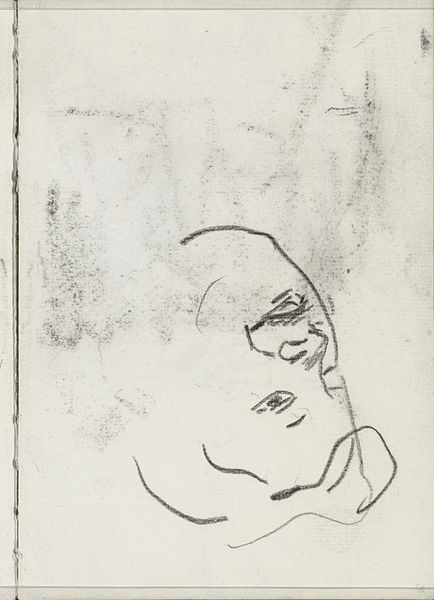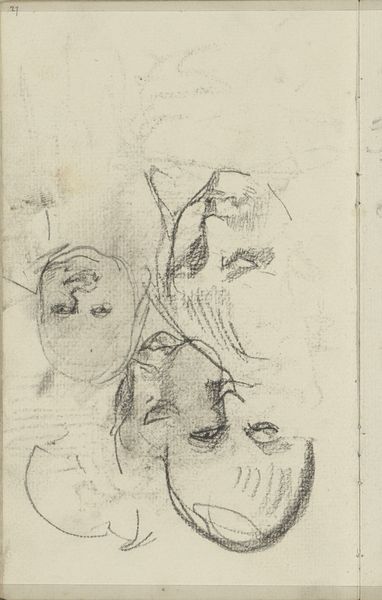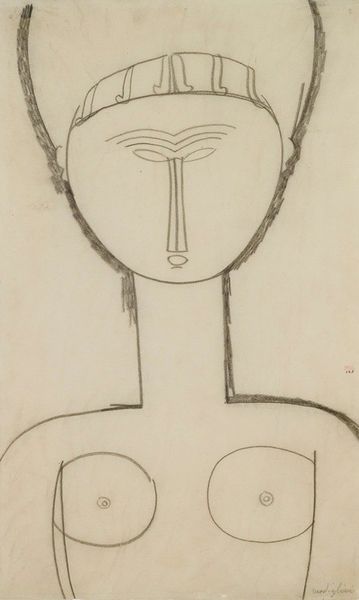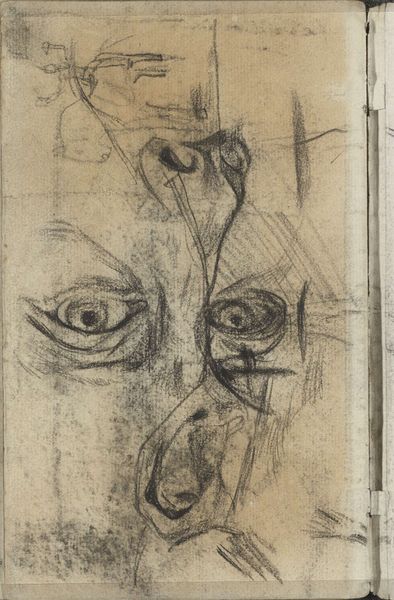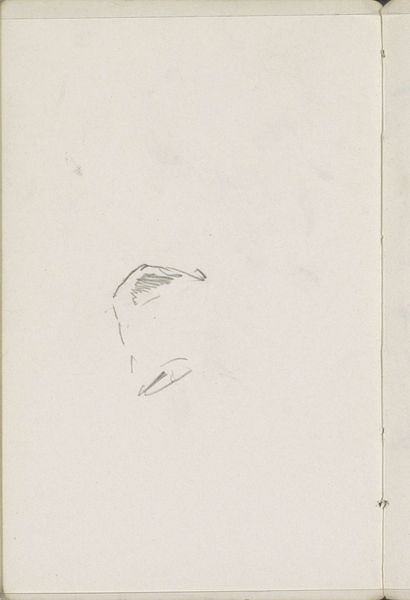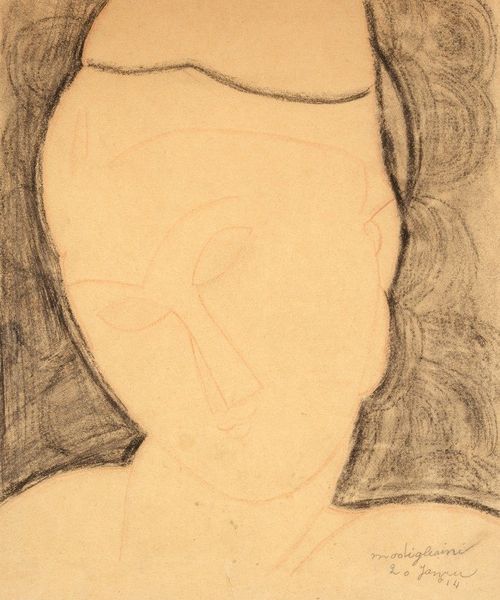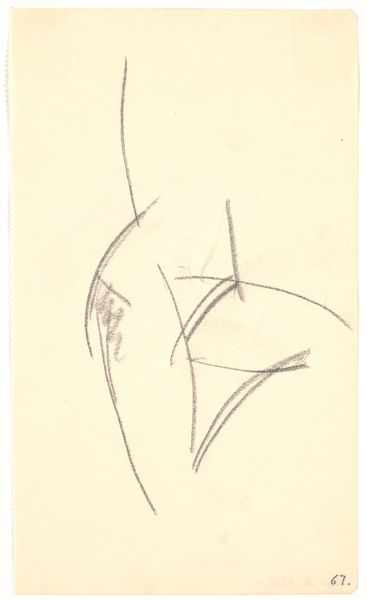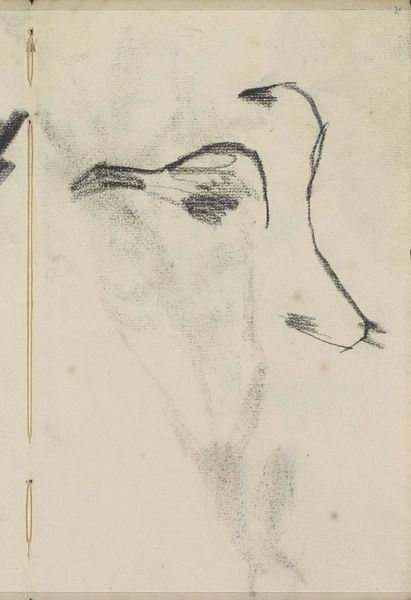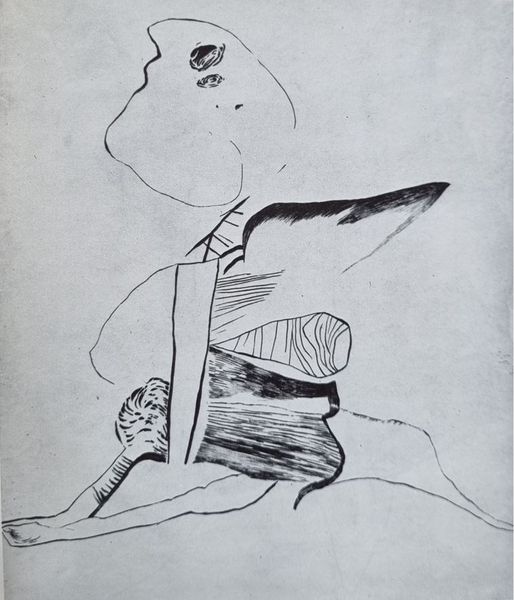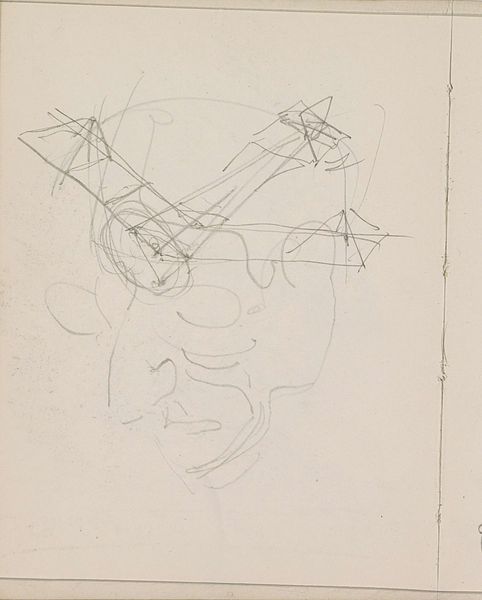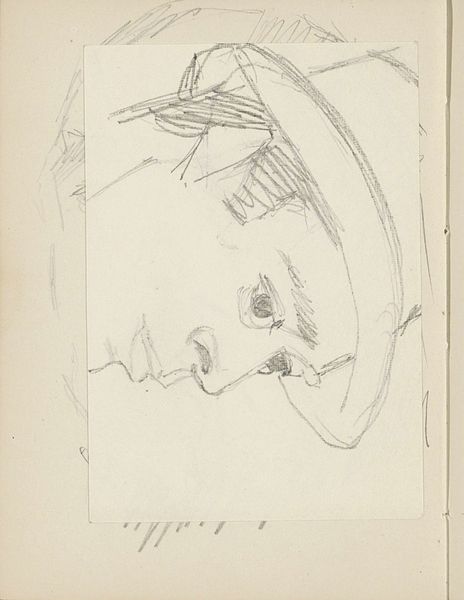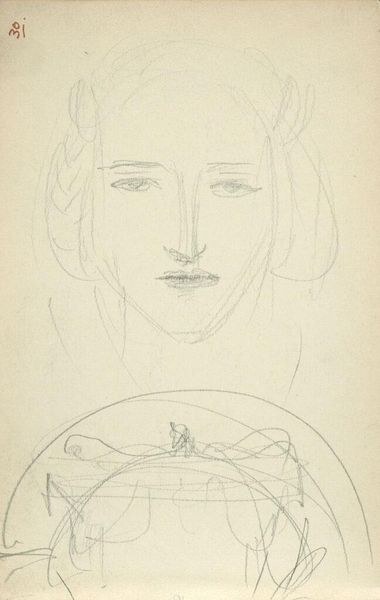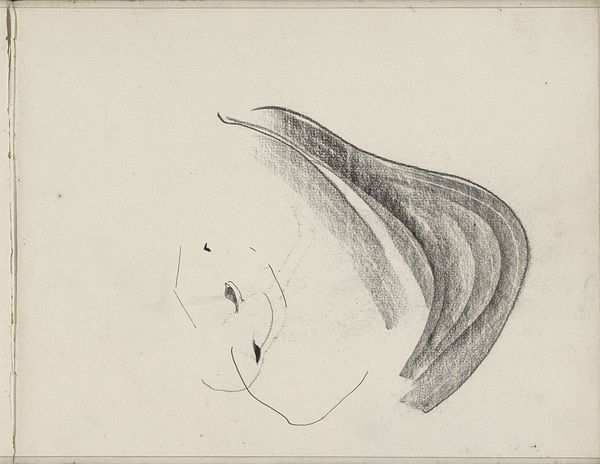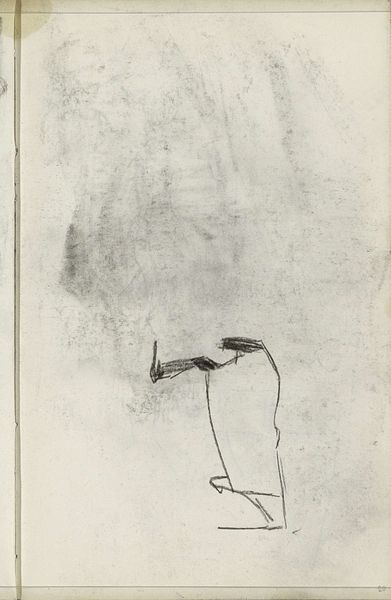
drawing, pencil
#
portrait
#
drawing
#
cubism
#
geometric
#
pencil
#
abstraction
#
modernism
Dimensions: 55 x 46 cm
Copyright: Pablo Picasso,Fair Use
Editor: Here we have an untitled pencil drawing by Pablo Picasso, dating back to 1936. The composition feels very fractured and geometric. What can you tell me about what’s going on here? Curator: It is crucial to address the formal elements first. Note how the artist presents a portrait, seemingly deconstructed, relying on the geometric fragmentation of forms. The figure's hat sits atop the subject with precision, suggesting that even a subtle object plays a significant role in representing form. Do you agree? Editor: Yes, I see what you mean. The hat does lend a kind of stability to the fragmented face beneath it, grounding the portrait somewhat. What about the different shading techniques employed? Curator: Notice the variance in the rendering of the face. A study of tone gives substance and depth. Observe how he uses light and shadow to delineate form. How might we read the darker versus lighter portions? Consider the dialectical relationship, perhaps the opposition or harmony that results between two versions of this figure. Editor: So, it’s almost like two different portraits superimposed. That makes the line separating them very significant. Curator: Indeed, a visual dissection. Line, tone, and form; these create a dynamic tension, forcing us to actively piece together the subject, moving us away from any conventional, singular notion of representation. Are there any lines or curves that stand out to you? Editor: Now that you mention it, the curves describing the cheek are very soft. And how one single looping line suggests the neck. It's fascinating how such simple lines can convey so much. Curator: Precisely. Picasso masterfully manipulates line and form. Ultimately, our focus should be directed to how line and shape contribute to an overall aesthetic experience of fragmentation and reconstruction. Editor: Thanks, I see the portrait in a completely different light now. Looking closely at its formal elements reveals how much it plays with representation itself.
Comments
No comments
Be the first to comment and join the conversation on the ultimate creative platform.
